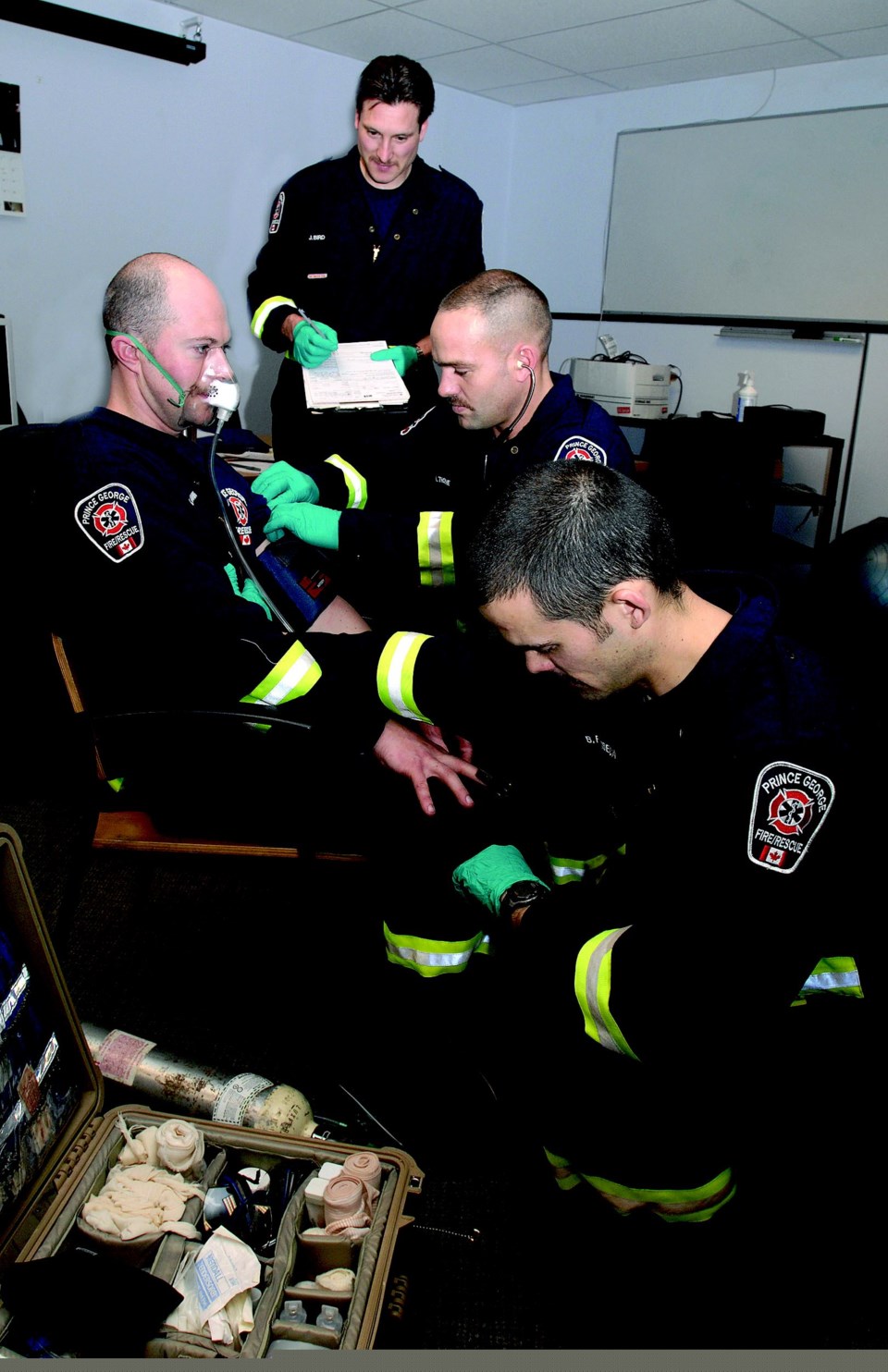Kevin Thorne has been talking his way through emergency situations since he was in Grade 9. He was a fuzzy-faced teenager when he joined his first firefighting team after the Kitimat Fire Department hired him as a radio dispatcher.
"I had no clue then I wanted to be a firefighter but I got talking to the guys at the fire hall and it seemed they all loved their jobs and I saw what they do," said Thorne, 27, one of four new firefighter recruits with Prince George Fire Rescue Services.
"I knew I wasn't going to be a professional athlete so I thought, why not be a professional firefighter."
After a few years studying at UNBC to be a conservation officer, Thorne got a job fighting
forest fires. Eventually that led to fire school in Vermilion, Alta., and his acceptance into the PGFRS.
"You have to be a jack-of-all trades to be a fireman and that's one of the great aspects of doing this job," said Thorne. "Everybody brings something to the table and they combine to make one perfect team."
The four recruits - Thorne, Kevin Gunning, Ben Fonseca and Jim Bird - officially joined that team last week after completing their nine-week orientation training.
They learned how to free people trapped in motor vehicle accidents, how to respond to hazardous materials emergencies, and how to save people trapped in confined spaces, swift water or under ice.
To simulate real-life situations, firefighters wearing blindfolds and oxygen tanks are required to squeeze themselves under through tunnels and narrow wall openings while entangled in a spiderweb of electrical wires. They also have to hang onto firehoses while shimmying headfirst down ladders three stories above the ground.
"To me, that's the most important training these guys get," said PGFRS chief training officer James Sweet. "The first day is based on saving yourself if you get into a problem, like entangled in wires or lost and disorientated. The second day is based on saving yourself and another firefighter on the ground, and the third day is being part of a rapid intervention team where you go in and actually rescue a downed firefighter who is either out of air or pinned.
"We train to make sure those guys are comfortable with their gear in zero visibility, because that's what they could face."
Bird, a 32-year-old Dunster native, graduated from UNBC with a wildlife management degree.
After 11 summers on a forest fire crew and four years volunteering at Pineview he decided he'd make a career out of it and went to fire school at the Justice Institute in Maple Ridge.
"My forest fire background will help, there's a lot of working in high-stress environments, being able to make critical decisions on the spot," said Bird.
Emergency patient care training is an ongoing duty of even veteran firefighters. All Prince George firefighters have achieved their Emergency Medical Responder tickets, the first fire department in the province to raise its first-aid
training to that standard.
After three years as a volunteer firefighter in Pineview, Fonseca is finally getting paid for his work.
With 10 years behind him as a millwright, the 29-year-old native of Prince George is now a full-fledged member of the PGFRS, following in the footsteps of his father-in-law,
retired firefighter Rick Burchill.
Inspired by a friend who worked as firefighter, Gunning, 32, enrolled in fire school near his home in Toronto and served a five-year stint as a military firefighter in B.C. before he caught on with the 120-member Prince George crew.
"The training gets your adrenaline going," Gunning said. "I knew that it's a wide variety of things they do and it wasn't just responding to a fire call or getting a cat
out of tree."

.png;w=120;h=80;mode=crop)

